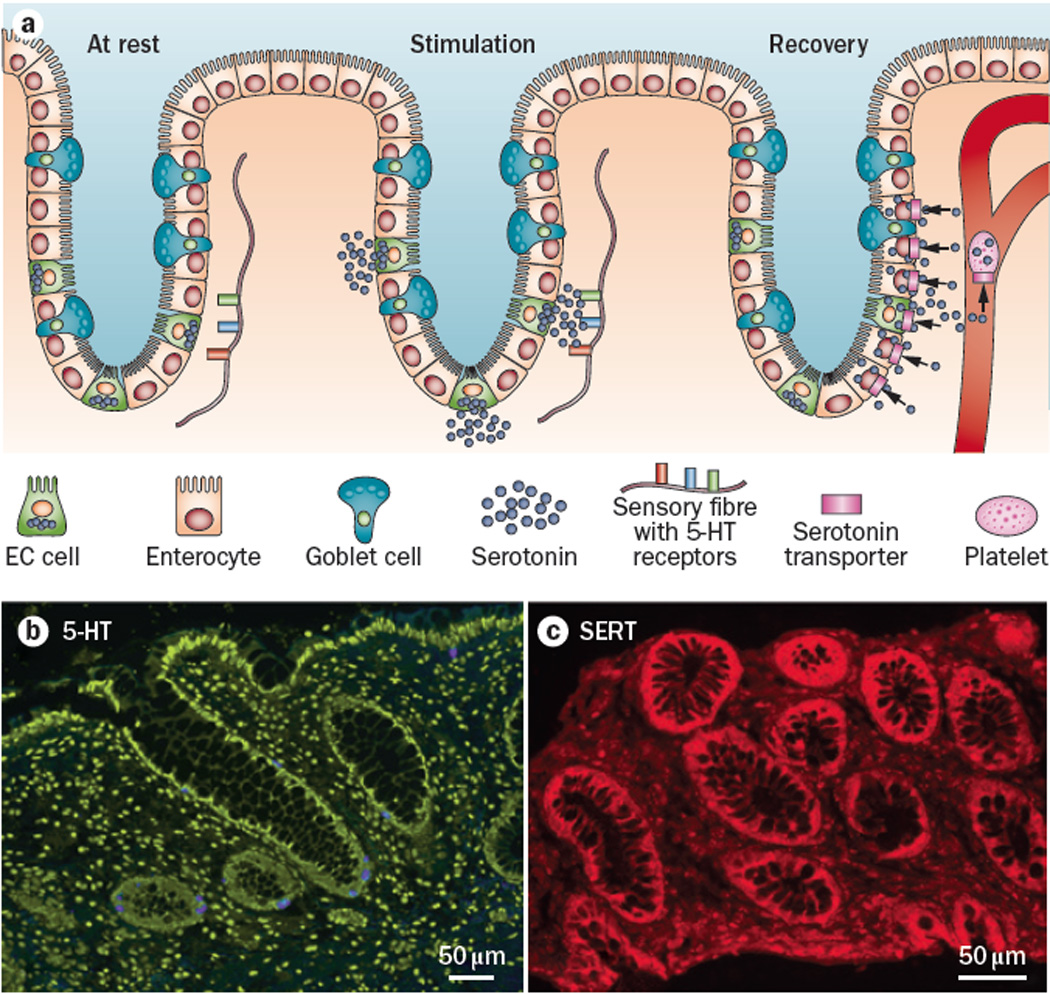Figure 1.

In the intestinal epithelium, 5-HT is synthesized and released by a small subset of cells called enterochromaffin (EC) cells, and the 5-HT is then removed from the interstitial space by the serotonin-selective reuptake transporter (SERT), which is expressed by essentially all epithelial cells. a. Immunstaining for 5-HT in a biopsy from the transverse colon of one of the authors (GMM). 5-HT is stained blue, and the section is counterstained with the nucleic acid stain, yoyo. Note that there are no mast cells stained for 5-HT in this micrograph; 5-HT-immunoreactive mast cells are common in mouse and rat, but not in human. b. Immunostaining for SERT in a human rectal biopsy specimen demonstrating that essentially all cells in the colonic glands are SERT-immunoreactive. c. Schematic diagram illustrating the sequence of events involved in 5-HT signaling in the gut. At rest, 5-HT is synthesized by EC cell. Upon mechanical or chemical stimulation, 5-HT is released into the interstitial space of the lamina propria and binds to receptors on nearby nerve fibers. The 5-HT signaling is terminated during the recovery phase. 5-HT is transported by SERT into epithelial cells where it is enzymatically degraded, or it enters the blood stream where it is transported into platelets where it is stored for future use.
